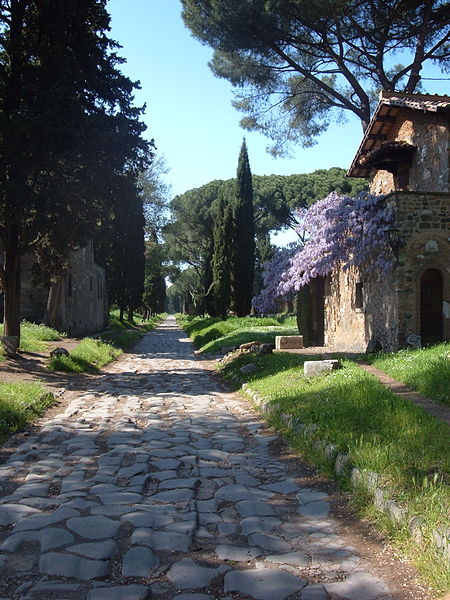The Appian Way is an ancient Roman road that connected Rome to Apulia and Brindisi in southeast Italy. Today, the old Appian Way is close to Rome apartments and hotels and is a popular tourist attraction. The first three miles from Rome are used by cars and public transportation, but after that, there is not much traffic and pedestrians can explore the many fascinating ruins on foot.
 The section of the road that is closest to Rome has three catacombs of Roman and early Christian origin. These subterranean passageways were made by men as underground tombs. It is said the bodies of the apostles Peter and Paul were buried there. Over the centuries the catacombs have been used for religious practices, smugglers’ hideouts, for war refugees and as a meeting place for cults.
The section of the road that is closest to Rome has three catacombs of Roman and early Christian origin. These subterranean passageways were made by men as underground tombs. It is said the bodies of the apostles Peter and Paul were buried there. Over the centuries the catacombs have been used for religious practices, smugglers’ hideouts, for war refugees and as a meeting place for cults.
Along the second mile of the road is the Church of Domine Quo Vadis. This is the place where, according to legend, Saint Peter met Jesus when Peter was fleeing persecution in Rome. There has been a church on this spot since the middle of the ninth century.
It is possible to follow the Appian Way on foot for ten miles from the beginning which is near the Baths of Caracalla. The Baths were built between 212 AD and 216 AD and were open to the public and free. The magnificent design for the baths inspired St. George’s Hall in Liverpool and Pennsylvania Station in New York City.
There are many monuments to see along the way including the Porta San Sebastiano which is the modern name for the gate in the wall of Rome built from AD 271 and 275. The ruin of the Circus of Maxentius, which was built from AD 306 to 312 AD, is between the second and third mile. It is second only to the Circus Maximus in Rome. The tomb of Caecilia Metella, built around BC 69, is nearby on a hill, and at 11 meters high, it dominates the surrounding area. The Capo di Bove is an archeological site of huge thermal baths built in the second century AD.
After the fifth mile on the Appian Way is the Mausoleum of the Orazi and Curiazi. There is also the Villa of the Quintili which was built by wealthy brothers in 151 CE. It was so big, it was said to rival Rome. The Nymphaeum can still be seen. They were natural grottoes which were considered the habitat of nymphs.
There are many other monuments beyond the six mile mark and several ancient bridges along the way. Travelers staying in hotels and apartments in Rome will find that this makes a great day trip to explore Rome history as well as spending time on the outskirts of Rome.





